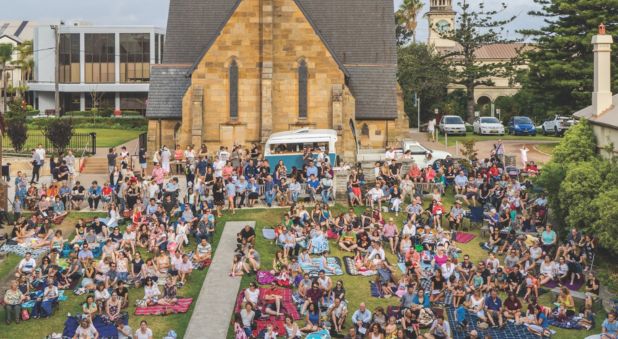For the past year, there has been a quiet revolution focusing on Sydney Anglican churches’ land and buildings – what we know as our “property”.
“Due to the nature of our Anglican system, we are not only present in virtually every community, we are also blessed to be on some of the best, most strategically located properties in those communities,” says Ross Jones, CEO of the newly created Sydney Anglican Property organisation. “This is a wonderful inheritance we’ve received from previous generations and the worst thing we could do is underutilise those amazing assets. We want to see our buildings and properties highly utilised by Christians, but we also want to see non-Christians on our properties, engaging with Christians with a hope for gospel opportunities.”
You can be forgiven if you are not familiar with Sydney Anglican Property. It was created in late 2023, an amalgamation of the Anglican Church Growth Corporation, St Andrew’s House Corporation, New Churches for New Communities and the Sydney Diocese Property Trust, with responsibility for helping parishes make best use of their locations, whether it be in greenfields (new areas) or brownfields (established urban centres).
"This is a wonderful inheritance we’ve received from previous generations and the worst thing we could do is underutilise those amazing assets."
“We want to put our property on mission by delivering high-quality projects that provide upgraded ministry facilities as well as much-needed community infrastructure – such as affordable housing, disability services and childcare – while also generating a sustainable and ongoing income stream for the parish and the wider Diocese,” Mr Jones says. “It really is a win-win-win.”
The approach is the result of years of thinking about how to bring together property services, experts and funding opportunities in a way that has never been done before.
For Mr Jones, the need is urgent. “Buildings and property strategies are being developed for each of the five regions, which will include some difficult and complex recommendations that require all of us to think about how best to use what we have inherited from previous generations. It’s our turn to consider how best to use our buildings and properties for the kingdom now, but also for our brothers and sisters in [the] future. If we continue to operate as we have in the past, in a city that is rapidly changing, then we risk being poor stewards of the ‘talents’ we have.”
SAP is streamlining property processes to make life simpler for busy rectors and parish officers.
...developments underway include new ministry facilities and staff housing, early learning centres, new housing (including social and affordable housing), and retail and commercial office space.
“We want to make it easier for parishes to do business with the Diocese by bringing all their property-related matters under the one umbrella and giving them a single point of contact,” Mr Jones says. “We want to free up parishes to get on with the core business of ministry and evangelism.”
The statistics are already impressive. Eighteen agreements have been signed between parishes and SAP across the Diocese. Four development applications have been approved, with a further three awaiting approval. The kinds of developments underway include new ministry facilities and staff housing, early learning centres, new housing (including social and affordable housing), and retail and commercial office space.
Projects such as the Beacon Hill disability accommodation and Cobbitty’s early learning centre are already completed, while a preschool at Sadleir is in the works.
The Fields are Green
For many years the Mission Property Committee identified and bought land for new churches in high-growth suburbs, with churches already built in Oran Park, Leppington and Stanhope Gardens. Plans are underway for church facilities in Marsden Park, Riverstone, Catherine Field and Box Hill, and Sydney Anglican Property has 10 “priority land search areas” that are the focus of the Diocesan Greenfields Strategy.
“We have the opportunity to create thriving gospel communities that are already up and running before people move into their new homes in the rapidly expanding areas of our Diocese,” Mr Jones says. “As we’ve seen in places like Oran Park and Leppington, often the church is the only significant piece of social infrastructure in the neighbourhood as people unpack their boxes. As a result, people are drawn to the warm sense of care and community they feel emanating from that gospel community as they look to put down new roots.”
Renewing the "Brownfields"
Greenfields represent only a part of SAP’s plans for the future. Significant – and expensive – land is already underutilised in established areas. Good development can enhance existing facilities and provide an income stream into the future. One example is a development for Christ Church Inner West at its Five Dock property. The parish wants to redevelop the church site adjacent to the new Metro station at Five Dock, and plans include new housing (including affordable housing), retail and commercial facilities, a childcare centre and an outdoor piazza to be used for community events. The income stream from the development will upgrade and maintain the heritage church and rectory. Plans have now gone to an independent panel for determination.
Another area for church partnership is the Federal Government’s $10 billion Housing Australia Future Fund. SAP, in partnership with Sustainable Development Group and Anglicare, has lodged bids for 11 projects with the potential to deliver about 1000 affordable rental dwellings and 8500 square metres of ministry space. Successful bids will be notified this month.














